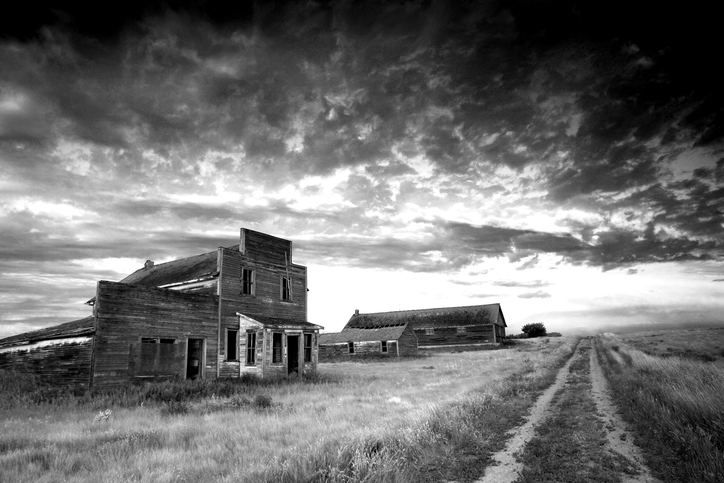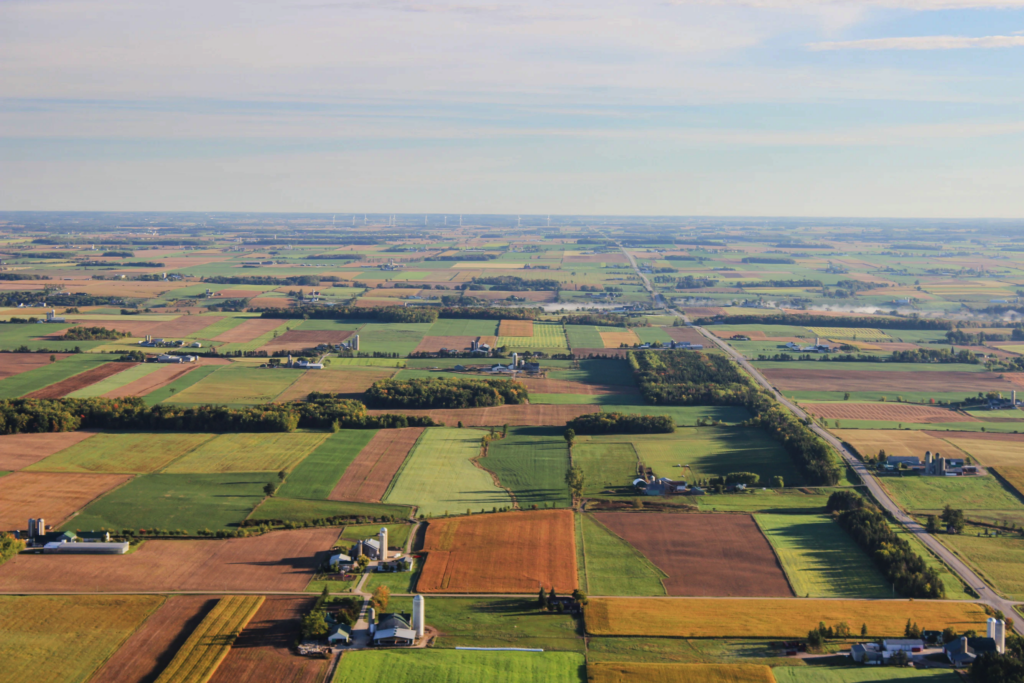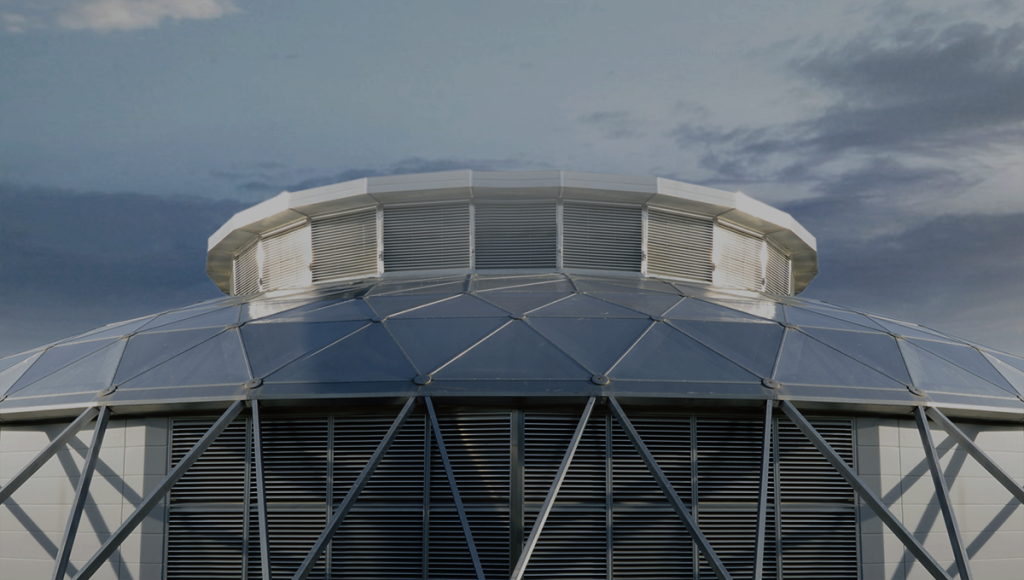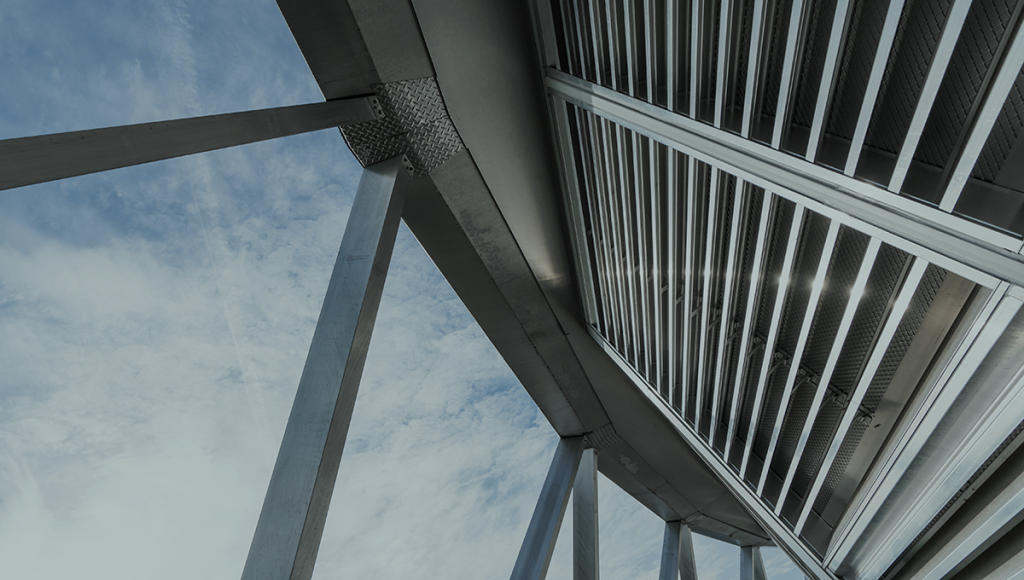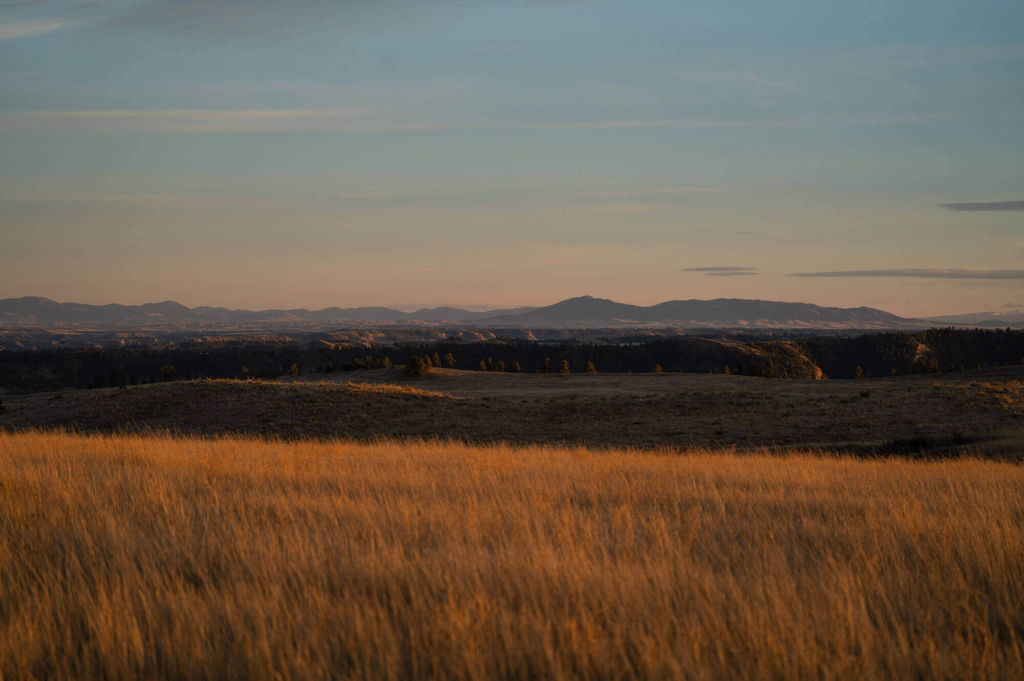Originally posted on: https://www.law360.com/articles/1736357
By Nathan Hale
The adoption of artificial intelligence and 5G networks has driven up demand for data centers and spurred record new construction, but this rapidly growing real estate sector faces challenges regarding space and energy capacity, as well as concerns about environmental impacts.
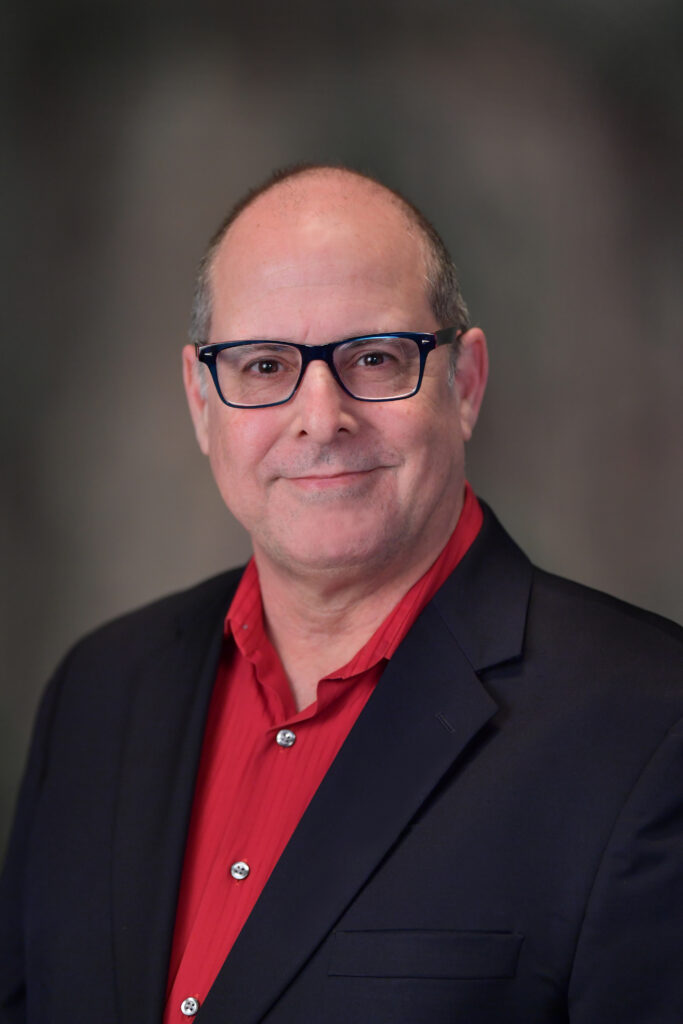
An all-time high of 2,287.6 megawatts of capacity was under construction across the U.S. during the first half of 2023, according to CBRE. But much of that inventory is preleased by major cloud service providers looking to support those new technologies, and major hubs have started to max out available electricity while facing extended timelines for delivery of new energy infrastructure, JLL found in another recent report.
Traditional data centers — typically large, rectangular boxes packed with rows and rows of computer servers — also face increasing scrutiny because of the massive amount of energy needed to run, and especially to cool, all that computer equipment. And more emphasis has been placed on reducing latency, or delay times in the transfer of data, through edge computing, placing data storage and processing at the edge of networks and closer to users.
Enter ServerDomes. The company says its alternative design for data centers, developed by an Oregon university, applies biomimicry principles to greatly reduce the electricity and water needs of a data center. Its facilities also can be built for a lower cost on a modest footprint and require less maintenance, allowing for greater flexibility in the data center landscape, less stress on the electrical grid and improved performance for users.
“ServerDomes is exactly the right data center at the right time, and combined with our network will deliver greater value and reach to our clients and help them compete in their industries and around the world,” Ray Fletcher, CEO of Mexico-based Fermaca Infraestructura, said in a recent statement announcing a partnership that will see his company build several of ServerDomes’ eponymous data centers along a planned fiber-optic line extending south from the U.S. border.
The Fermaca deal is one of several projects in the works for ServerDomes, as the company looks to establish itself in the marketplace, according to ServerDomes CEO David Jackson, who recently spoke with Law360 Real Estate Authority about the benefits of its product and how it hopes to help support future technological needs.
This interview has been edited for length and clarity.
What is a ServerDome? What are the distinctive features, and what sets it apart from typical data centers?
One of the key things for any data center is you have to get the hot air out, because servers create a lot of heat. Traditionally, the way to do that is to funnel air through a ducting system, which makes air bend in ways it doesn’t want to go. The data centers are in a rectangular box, so you have to have a mechanical means to move that air. At the same time, you have to bring cool air through the servers themselves because they have to be kept at a certain temperature.
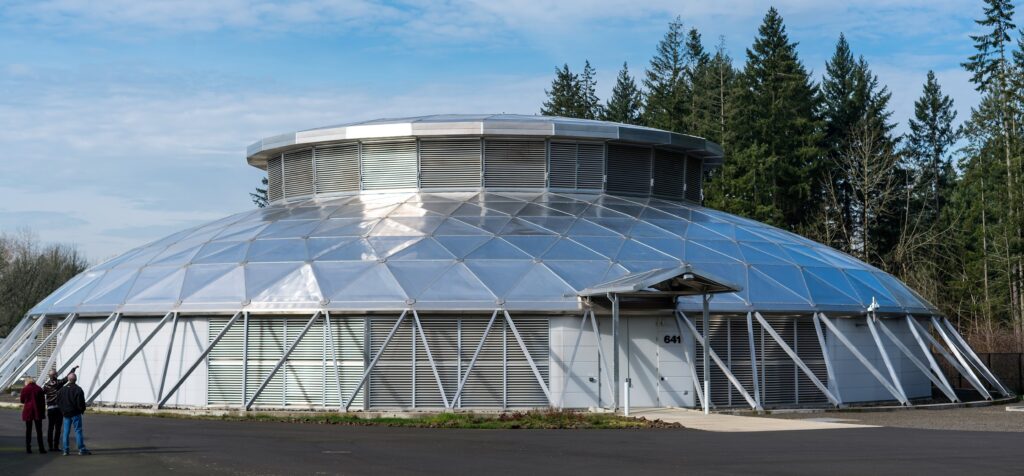
27% and water use by about 92% compared to traditional rectangular facilities. (ServerDomes)
What we’ve been able to do is to eliminate all of that by the architectural design of our data center, which is in the shape of a geodesic dome. You’ll see louvers all around the exterior of the data center. Behind those louvers are a series of fan walls, which gently push air toward the servers. The servers then have their own fans within them that pull the air through and out the back of the server rack into what they call a “hot aisle.”
In a traditional data center, that hot aisle air is then captured and moved to the outside through some other kind of mechanical means. With our data center, we just allow that air to naturally rise, because warm air rises — a basic law of thermodynamics — and it goes out the very top of the data center, what we call the cupola, which has vents all the way around it.
That allows us to operate this data center using 27% less energy than a traditional data center and also about 92% less water. That makes it incredibly attractive for anybody who’s trying to put together a sustainable data center that checks all the ESG boxes, which is becoming more and more important.
The other thing that sets us apart is we only need an acre of land for this data center. So we’re not taxing the community by taking up lots of space. We’ve got a very efficient data center that’s good to the environment and, quite frankly, less expensive to build and less expensive to operate.
Could you tell us more about the backstory of the design and your company?
The data center itself was designed by Oregon Health & Science University about nine years ago. When they developed it, they really didn’t have the intention for it to be something that they’d be taking to market. What they were looking at was just, how can we build the most efficient data center?
They built it, and it’s been working without a single day of downtime for over eight years now.
About five years ago, we came along, and we were able to acquire the rights to the intellectual property to be able to sell this data center into the marketplace. We pay a small royalty to Oregon Health & Science University for every dome that we sell.
We’ve been going to market now pretty heavily over the last probably year and a half, two years. COVID set us back about a year, like it did probably everybody else, but we’re really starting to pick up traction now with it.
What have you been able to demonstrate so far with the ServerDome, and what do you have in the works?
What we’ve been able to demonstrate over the last eight years is that this data center will perform as advertised in probably about 95% of the planet. We’ve had it tested with extreme heat. We had a 116-degree-Fahrenheit day here in the Portland, Oregon, area, and the rack temperature of the data center never got above 82 degrees, which is well within ASHRAE [American Society of Heating, Refrigerating and Air-Conditioning Engineers] standards. So, we know that the cooling system works.
Where we would have to augment the cooling system would be in a place like Dubai, where it’s continuously 120 degrees. But even implementing [waterless] cooling in that environment, we still come out with a greater efficiency ratio than anything else that’s out there.
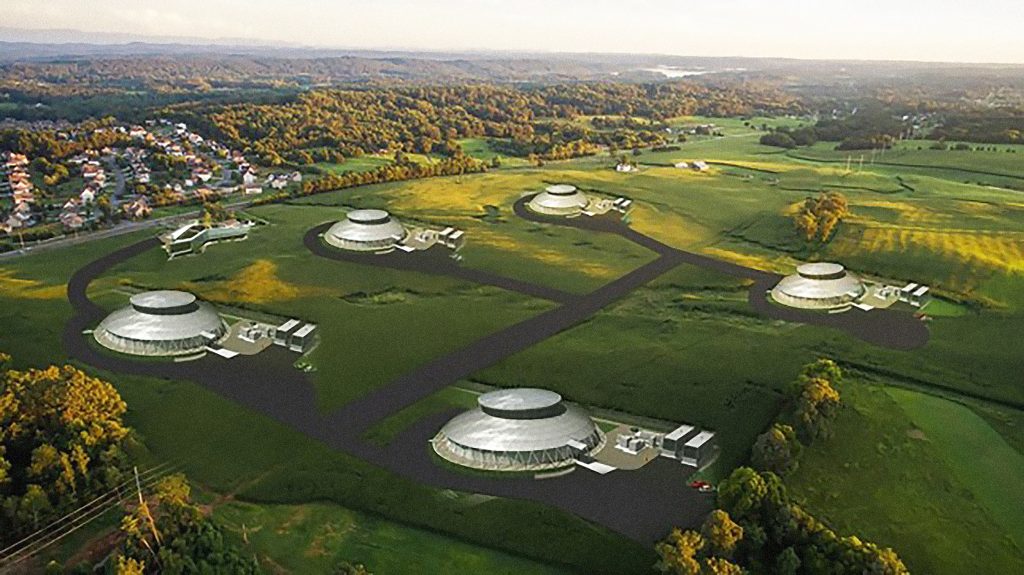
We also tested through the worst air quality in the world. We had tremendous wildfires that surrounded the Portland area, and if you were here, you were literally going out and wiping ash off your car every day. It was just amazing. And the filtration system on the data center worked perfectly.
We’ve also had third-party verification of the data center’s overall performance. The energy savings and water savings numbers are based on that.
We signed an agreement with Fermaca Infraestructura, which is going to be building our data centers in Mexico as part of their infrastructure development. They’re anticipating as many as five data centers over the next few years.
We’ve also signed a letter of intent with a company called Quantum Corridor in Indiana. They’ll probably build two to three data centers along a fiber network that they’re developing with Purdue University and some other universities in the area. And then last week, we signed a memorandum of understanding with a company in Canada called Impact International Secured Investments. They’re going to be building green projects throughout Western Canada and want to put our data center in smart city projects. So, we anticipate a few data centers out of that.
And then we have several other projects in sales development in Utah and Austin, Texas. All told, we probably have about 25 data centers in our pipeline right now.
Fermaca’s CEO called ServerDomes “the right data center at the right time.” What does the data center landscape and typical data center look like right now, and how do you come in?
There’s been these huge data center hubs, in places like Ashburn, Virginia; Santa Clara, California; Hillsboro, Oregon, where big operators have come in and built large, 100-megawatt or larger data centers.
Now, with the advent of AI and 5G and some other technologies that require lower latency times, it’s becoming a struggle for some of these hyperscale data centers to keep up with the demand. And these major hubs are out of capacity. They really can’t build any more there.
The other thing is that they’re out of energy capacity. The utilities are sometimes saying, “Yeah, we can put in a powerline for you, but it’s going to take three years.” So, the time to get to market now is lengthening for new data centers.
With our data center, we’re not trying to compete with the hyperscale head-to-head. We’re a smaller data center. We’re 5 to 8 megawatts. But what we can do is build multiple data centers geographically located in strategic areas. We can address the latency issues that the customers have and do it in a way that’s not as impactful on the grid, which is aging and also take much fewer resources from the community itself.
Also, data centers don’t employ a lot of people. You have this situation where you have this large, power-hungry building that’s taking a lot of power, taking a lot of water, not necessarily giving back equally to the community, and so city leaders are starting to look at that, saying, “OK, well, maybe this isn’t the right investment that we want to have come into our community.”
We solve that problem because we’re a small footprint, not a lot of power, hardly any water. In fact, you’ll use more water at your house today than our data center will.
You mentioned that you’re not trying to compete directly with the hyperscale data centers, but what is your scalability, and what do you envision in terms of ServerDomes’ growth?
You’ll never replace the hyperscale data center, and I’m not necessarily saying that you need to. But what we do offer is the ability to flexibly grow as you need resources. What happens a lot of times is you build this giant hyperscale data center, and you have a lot of stranded capacity while they fill the data center over a period of years.
With our data center, we’re cash-positive at half capacity. Say we build a 5-megawatt data center. We can prelease 2 megawatts before we start construction, and then as we’re building, go out and try to fill the rest. And then, as we start getting to a point where we’re about sold out on this data center, that’s kind of the trigger to say, “OK, let’s build a new data center close by if we can.”
And then we can interconnect those to two data centers. If you need a 10-megawatt, you build two domes. Typical cost for a data center right now is $10 million to $12 million per megawatt. We can do it for $8 million to $9 million per megawatt. So, we’re a lot less expensive to build a second data center than trying to just build a giant one.
And that just fits in with our design. We’re kind of at the sweet spot of this particular architectural design at about the 4- to 5-megawatt size.
Now, we can expand that by incorporating technologies like liquid cooling. In fact, we were getting a partnership together with a company called LiquidCool Solutions, which will allow us to add an extra 2 or 3 megawatts of processing power within the same space.
You said that AI and 5G are increasing demand for data centers. Can you explain more about the impact of these new technologies and how ServerDomes hopes to help address that?
The challenge with AI right now is that when you ask ChatGPT to answer a question for you, the amount of power it takes for ChatGPT to answer that question is equivalent to how much power it would take to charge your cellphone about 60 times. So, it’s very power intensive.
The other challenge with AI is that the power draw is done in these really intense bursts of energy, and utilities don’t like that because now you’re messing with frequency and voltage and all this kind of stuff. It becomes harder for the utility to be able to adapt to the power needs that are being required with AI. So, that’s one of the big challenges that people aren’t really looking at: the implications of extraordinarily large-scale AI concentrated in one place and the impact that has on the grid itself. And our utility grid is aging. The infrastructure is not really set up to handle that kind of growth that fast.
With our data center, we’re able to handle AI because we’re a smaller form factor and the amount of power that we’re going to require is not as taxing on the grid as you might find with a big, hyperscale data center.
Rather than build a big hyperscale data center, we could build dozens of ServerDomes distributed throughout the country, dispersed in strategic locations, and have much less impact on the grid than what you might have with a traditional data center where all the power is going into one location.
What are some other factors to keep an eye on in the overall data center sector moving forward and what else do you envision for ServerDomes?
There’s a big, big land grab going on right now in the data center space because people are seeing that we do need to go to different markets beyond the traditional places where data centers have been built. So, you’re seeing places like Dallas, Atlanta, Salt Lake City come on the radar as places where people are looking to build the traditional, large data centers.
You’re also seeing some of the big players, like Microsoft, Google, Amazon, starting to buy up capacity as much as they can, anticipating the growth and needs that they’re going to have. Primarily, they’re looking at larger data centers, but a little bit in the co-location space as well.
We believe we offer a really good alternative for customers in two areas. One is on-premise data centers: the customer that has their own data center, and they need to expand. There are also a lot of companies that went to the cloud for a while, and the cloud got more expensive than just running your own data center on site, so there’s repatriation that goes on with that. Hospitals are a good example with concerns right now with data sovereignty and security. We offer them a lower-cost option to be able to do that.
And then the second is that retail co-location data center space is going to come at a premium, especially in cities that are looking to expand 5G networks and really embrace AI and don’t want to spend a huge amount of resources to bring in a hyperscale data center. We can bridge that gap.
–Editing by Haylee Pearl and Covey Son.

